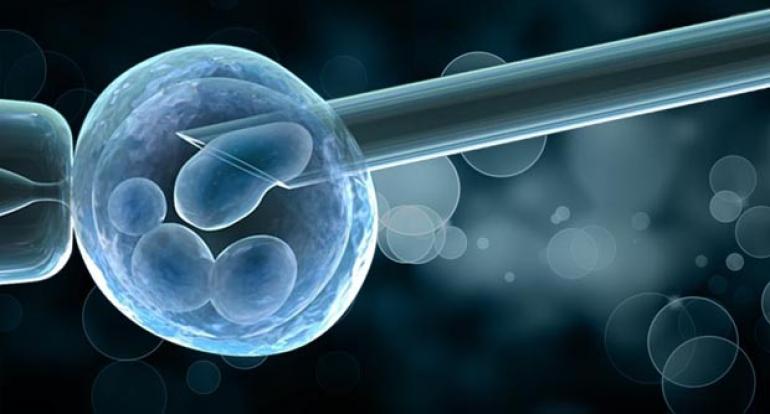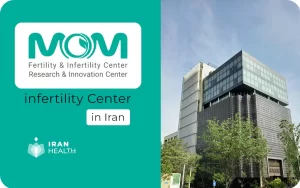Starting the journey of becoming a parent can be both exciting and stressful. You may have a lot of dreams and fears. A safe pregnancy is still the most important thing for parents-to-be as they work through the complicated web of theory and fertility. But what if there was a scientific lighthouse that could light up the path and make it easier for people who want to feel good about their future baby’s health to read? Welcome to the cutting edge of IVF genetic testing.
Through the study of DNA, PGT is meant to find certain genetic illnesses that could be passed on to your biological child. By looking at the embryos, your doctors can make it less likely that genetic diseases like HIV will be passed on to your child if the pregnancy goes well. During this test, doctors separate the embryos that have genes that cause problems from the ones that don’t. They then move the healthy embryos to the uterus.
Your fertility specialists and doctor will do PGT tests after they get your embryos and fertilize them and before they move your embryo during your IVF cycle. The PGT test will look at the embryos to see if there are any DNA problems in the embryos made during IVF.
Highlight
- PGT can detect anything from 1 to 22 chromosomes, including X and Y.
- Identifying embryos with excess or missing chromosomes is the main purpose of PGT testing for aneuploidy (PGT-A).
- Pre-implantation genetic testing (PGT), especially for aneuploidy, improves IVF success rates, especially for women over 35.
What is PGT, and How Does It Enhance IVF Success?
Preimplantation genetic testing, or PGT, examines genetic problems in a few cells from an egg made through in vitro fertilization (IVF). This makes it easier to find healthy eggs, which lowers the risk of miscarriage, failed implantation, and birth defects in the child.
The main question arises here, Is necessary to do this test?
There is no need for this test, but many people who are trying to get pregnant choose to have it done before the egg transfer during IVF (1). However, PGT is a good way to select the best embryo for transfer because it lowers the risk of death, keeps genetic defects from being passed on, and gives a good idea of how well each embryo will do.
Who is PGT intended for?
So when you said it’s unnecessary to test who is a candidate for genetic testing and who comes first? Let’s see it in summary:
- Women older than 37
- Personalities or pairs who carry a dangerous autosomal condition
- People or couples who have chromosomal or genetic diseases that run in their families
- People or couples who have a history of genetic diseases in their family
- People or families who already have a child with a genetic disorder
- Individuals or couples who have previously terminated a pregnancy due to a dangerous genetic condition.
*Keep in mind that you should make sure to talk to your doctor about PGT and get his advice.
The PGT Process
As we said, PGT ensures that only the most healthy embryos are picked to be implanted. This dramatically raises the chances of having a healthy, happy baby. Here are the exact steps that need to be taken:
- Preparation and Biopsy: Collecting Embryo Samples for Testing:
Before PGT, medical professionals and people who want to become parents must undergo extensive training. First, IVF is used to add more than one egg. Labs get eggs and fertilize them. The eggs are carefully grown five to six days after conception until they reach the blastocyst stage. Embryos currently have between 100 and 50 cells.
- Testing and Analysis: Identifying Genetic Abnormalities
The cells are genetically checked for problems that could mean the person has Down syndrome, cystic fibrosis, or Tay-Sachs condition after the test. PGT-A looks for aneuploidy, PGT-M looks for unpaired genes, and PGT-SR looks for changes in the structure. PGT-A checks the number of chromosomes; PGT-M finds genetic problems in families; and PGT-SR finds structural problems like translocations.
- Results and Transfer: Selecting Healthy Embroidos for Implantation
Genetic testing lets doctors know which eggs are healthy. This information can help doctors and potential parents find embryos that have the best chance of resulting in a safe pregnancy and child. PGT is important because it greatly lowers the risk of inheriting a disease.
Cryopreservation keeps genetically healthy eggs safe until they are transferred. The treatment is timed to match the recipient’s mating cycle for best implantation and growth. Genetic testing lowers the risk of genetic loss and the stress of parenting
An overview of PGT Testing (PGT)
| Step | Description |
| IVF and Embryo Creation | Undergo IVF to create embryos by stimulating ovaries to produce multiple eggs, which are then fertilized with sperm in a laboratory. |
| Embryo Development | Allow embryos to grow for 5-6 days until they reach the blastocyst stage. |
| Biopsy | For genetic testing, gently remove a few cells from the embryo’s outer layer (trophectoderm). |
| Freezing | Freeze the embryos to wait for the test results. |
| Genetic Testing | Analyze the removed cells in a laboratory to detect genetic abnormalities (aneuploidy, gene mutations, or structural chromosomal rearrangements). |
| Results | Receive test results within 1-2 weeks. If the embryo is healthy, thaw and transfer it to the uterus for implantation. |
Benefits of PGT in IVF
PGT-A provides several advantages, some of which may be disputed by certain critics. These advantages are:
- Improving pregnancy outcomes with PGT
Fewer embryos are available for transfer when PGT-A is used, which lowers the chance of a failed implantation or loss. Transfers that don’t work out are hard on people’s emotions, finances, and time.
- Reducing the Risk of Miscarriage and Chromosomal Abnormalities
By giving partners hope and the truth during the current IVF process, PGT has changed the field of reproductive medicine. Adding PGT to in vitro fertilization (IVF) can significantly lower the risk of miscarriage, which happens a lot and is usually caused by problems with the embryo’s chromosomes.
- Increasing the Chances of a Healthy Pregnancy and Live Birth
It is easier to get pregnant and ship live kids with preimplantation genetic testing (PGT), but it can still happen. Euploid cells are those that have the right amount of chromosomes. An embryologist must do a thorough and accurate embryo biopsy to find them. If you look for chromosomal integrity first, genetic diseases, abortions, and other problems are much less likely to happen.
Women and men using selective euploid egg transfer on their eggs are likelier to have a healthy child. Remember that the number of live births drops in all age groups when embryos are transferred on days five or six without PGT. You should consider the good things about PGT as a smart choice now that these new facts are known. It also meets the needs and wants of people with children with the help of technology.
Read more: What tests need to be done before IVF treatment?
- Improving IVF Success Rates and Reducing Emotional Stress
In vitro fertilization (IVF) works better when pre-implantation genetic testing (PGT) is done, mostly to check for aneuploidy. This is especially true for women 35 and older. Choosing healthy embryos is essential so they can implant well and grow to full term.
Not being able to plan for your family can be very stressful for people who have a history of genetic diseases.
PGT Success Rates
While embarking on the journey to becoming parents, couples and individuals often face the difficult truth of genetic abnormalities that may impact their future children.
Success Rates and Statistics: What to Expect from PGT
PGT makes it harder for IVF to work as a fertility treatment. Different studies and fertility experts say that the success rates of PGT and IVF vary. The genetic condition, age, and number of embryos count.
A 50–60% live birth rate is seen with IVF in women under 35 who have genetic tests. Women’s chances of success drop a lot after age 40. These outcomes rely on the IVF lab, the reproductive doctors, and the patient’s health.
Factors Affecting PGT Success Rates
Several crucial factors influence the success rates of genetic testing in IVF:
- In fertility methods, the age of the mother or egg donor is important because eggs from women get worse with age. PGT and all other means of artificial reproduction are suitable for younger women.
- A disease passed on genetic tests may not be as exact when there are issues with a single gene, chromosomal abnormalities, or structural rearrangement. Genetic problems can happen to embryos.
- Strong embryos can survive being frozen and cut open for genetic tests before they are implanted. This increases the chances of implantation and pregnancy.
- Handling, genetic testing, and egg biopsy are all skills that are different in the lab and the clinic. New technologies and ways of doing things help PGT be more dependable and effective.
- Health, way of life, and environment: Health, way of life, and environment can change the effects of IVF and PGT. You might have better results if you don’t smoke or drink and are less worried.
Type of PGT; What’s the difference between PGT and PGTs?

Infographic
- Preimplantation genetic testing for aneuploidy is done with PGT-A, which used to be called PGT. To do this, embryos are grown until they reach the blastocyst stage. Then, a biopsy is taken to examine a cell sample from the embryo. The embryo is not hurt during this process, so it can be used to get pregnant again once the results are known.
- The PGT-A test checks the chromosomal genetic integrity of embryos by checking whether each cell has the right amount of chromosomes. Simply, it looks at the karyotype, which could be 45XY or 46XX. Embryos with normal karyotypes are the only ones with the right genes for a safe pregnancy and delivery. So, if any eggs don’t implant or have a miscarriage because of bad preimplantation genetic testing for aneuploidy (PGT-A), they will either not implant at all or will have a miscarriage. An embryo with problems, like a 47XX+21 or 47XY+21 egg with Down syndrome, rarely results in a live birth.
- PGT-A doesn’t check for genetic diseases like sickle cell disease, muscular dystrophy, Huntington’s chorea, or inborn metabolic mistakes. It also doesn’t check for polygenic diseases like diabetes or heart disease.
- If there is a family history of metabolic or genetic illnesses, a related test called PGT-M can be used to biopsy embryos and look for the faulty gene that causes the disease.
- Women over 37 years old who have had a miscarriage or failed IVF tries are usually given PGT-A. So are people with a family history of chromosomal problems.
- Preimplantation genetic screening (PGT) is recommended for parents with no known genetic diseases and people with the following conditions: The female partner must be at least 38 years old. Couples who want to have a process where they transfer a single embryo. People want to be able to choose the sex of their children.
What is the PGT cost?
Here’s a detailed table comparing the cost and specifics of Preimplantation Genetic Testing (PGT) in Iran, Turkey, and the US:
| Country | PGT-A Cost | PGT-M Cost | Additional Details |
| Iran | $1,000 – $1,500 | Not specified | Costs vary depending on the clinic and the number of embryos tested. Gender selection is legal and widely practiced. |
| Turkey | €1,500 – €2,400 | Not specified | Costs include genetic embryo testing and may involve additional expenses such as tests and consultations. |
| US | $350 – $500 per embryo | $1,500 for biopsy + $150 per embryo | Costs can increase with shipping and testing for single-gene disorders (PGT-M). |
What Insurance Plans Cover IVF and PGT?
Some couples are covered by insurance for in vitro fertilization. However, in our experience, insurance rarely pays for genetic or chromosomal testing (PGT).
IVF/ICSI cycle with Genesis24-aaCGH PGT and embryo biopsy on day five
When IVF/ICSI and frozen transfer cycle expenses are fully covered by insurance,
$5,00 + medications for the package
- embryos’ trophectoderm biopsies (day 5/6)
- freezing, or vitrification, of the embryos
- *PGT testing for a single gene condition involves additional fees* PGT-A testing by Genesis Genetics (courier fee and PGT-A testing)
- Any embryos stored for longer than a year will incur extra fees.
Common Misconceptions About PGT
A medical test cannot be 100% accurate, but PGT uses cutting-edge technologies to lower the chance of mistakes. Testing should be done by a well-known, specialized lab, which can make the results much more accurate and reliable.
- PGT is unreliable and provides inaccurate results.
Many people have the wrong idea about PGT, which says that it can make mistakes and lead to incorrect diagnoses. PGT has shown amazing levels of accuracy in real life.
- PGT is only helpful for older couples or those with known genetic disorders.
One myth that needs to be busted about PGT and how well it works is the idea that it’s only for older couples or people with a genetic tendency toward it.
- PGT will guarantee a pregnancy and a perfectly healthy child.
A prevalent myth is that PGT ensures a prosperous pregnancy and the delivery of a child without any health complications.
- All embryos are harmed during the PGT process.
Addressing concerns over the safety of PGT frequently centers around the belief that the biopsy procedure necessary for testing causes harm to all embryos.
- The Cost and Insurance Coverage of PGT
We are discussing the expenses associated with chromosomal and/or genetic analysis, specifically preimplantation genetic diagnosis (PGT) testing.
- Multiple elements influence the cost of PGT:
- The price of in vitro fertilization at the PGT clinic
- The price of IVF drugs
- The cost of the embryo biopsy procedure at the PGT clinic.
FAQ:
What day is PGT testing done?
People who are getting in vitro fertilization (IVF) usually aren’t told to get preimplantation genetic screening or detection (PGT) because it doesn’t help most people. Your doctor will suggest a Day 5 trophectoderm biopsy if PGT or PGT is necessary.
Does PGT increase the success of IVF?
When genetically normal embryos are used, the likelihood of a successful pregnancy may increase twofold. PGT can significantly increase the probability of successful implantation by enhancing the rates at which individual embryos develop into pregnancies.
Can you do IVF without genetic testing?
Genetic testing is not considered essential, but it is a secure and efficient method to maximize the benefits of your IVF procedure.
What is the difference between prenatal diagnosis and pre-implantation genetic diagnosis?
In contrast to chorionic villus samples and amniocentesis, PGT is done on embryos that are growing in the IVF lab before they are transferred to the uterus.
Conclusion
IVF genetic testing protects the unpredictable path by studying the basic parts of life in great detail while the baby grows. PGT carefully improves breeding methods to make them work better and protect future generations. As people who want a child, we know this complicated screening process isn’t just about numbers. It’s about hope and building a strong legacy before the baby is born.
With PGT-A’s complete chromosome analysis, PGT-SR’s focused translocation recognition, and PGT-M’s personalized genetic disease screening, people who want to become parents can learn important things. With this information, people can use medical science to make choices that will affect the future.
As we end this inquiry, let us recognize the huge effect PGP has on families, people’s health and well-being, and their ability to do things. PGT gives people who have had assisted reproduction hope that they can become good parents. PGT tells you when you’ll succeed and raises your chances. Please keep in mind that your situation might be different. It’s essential to have a unique consultation with your fertility doctor. You can ask your doctor for a more detailed explanation of the steps in a PGT.
References:



